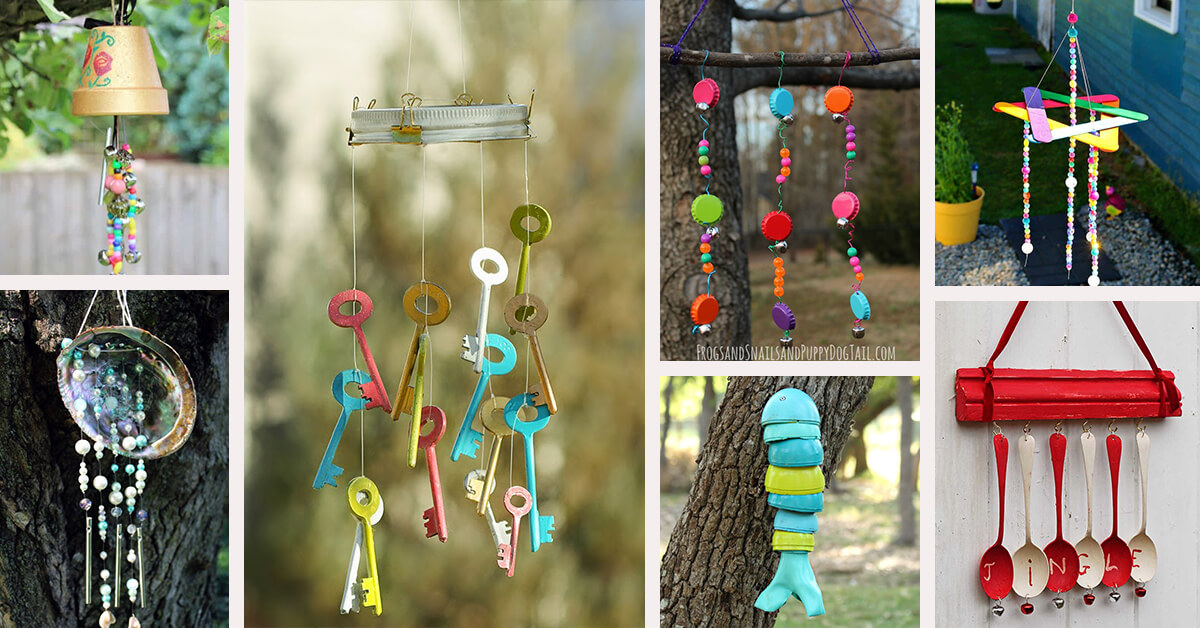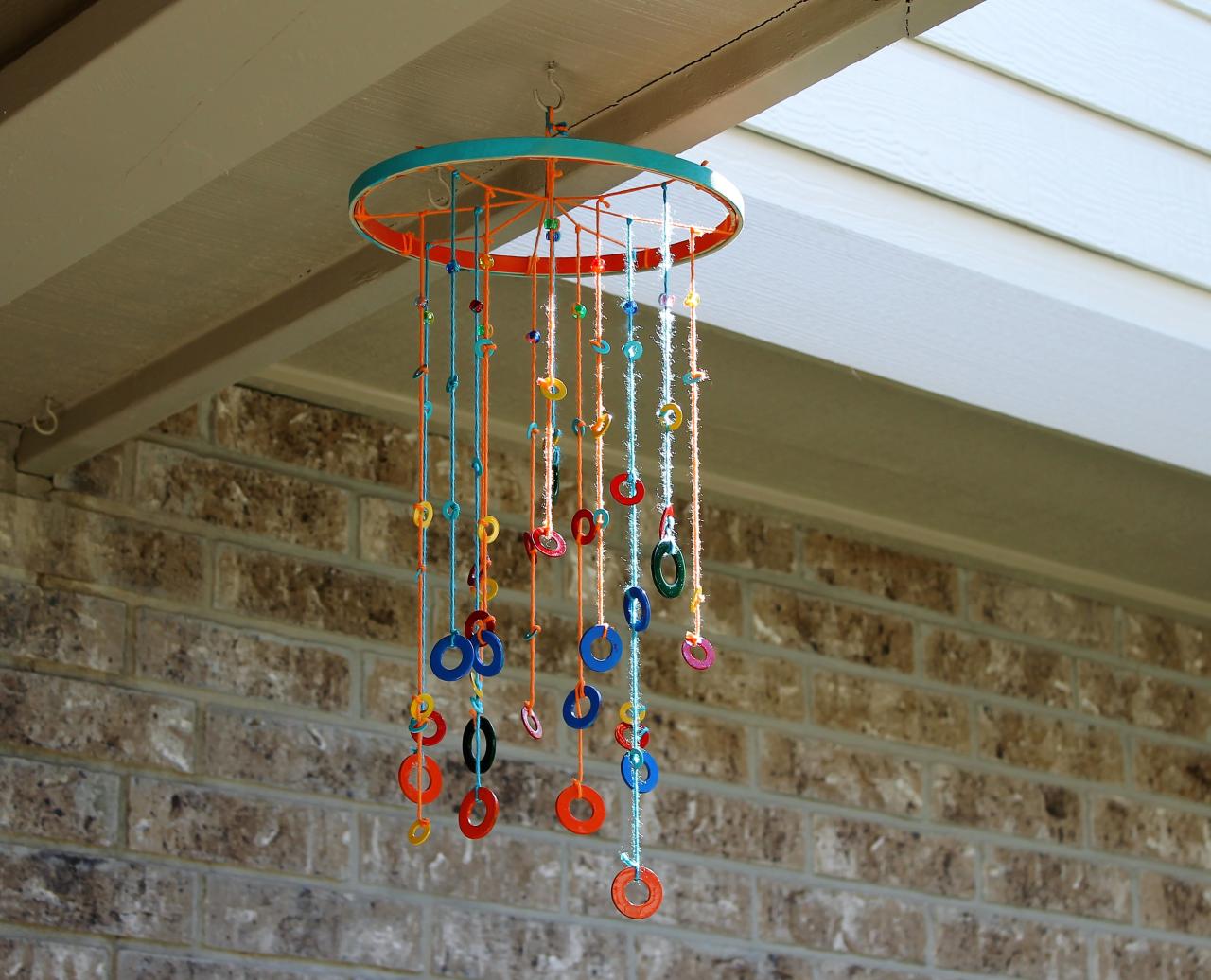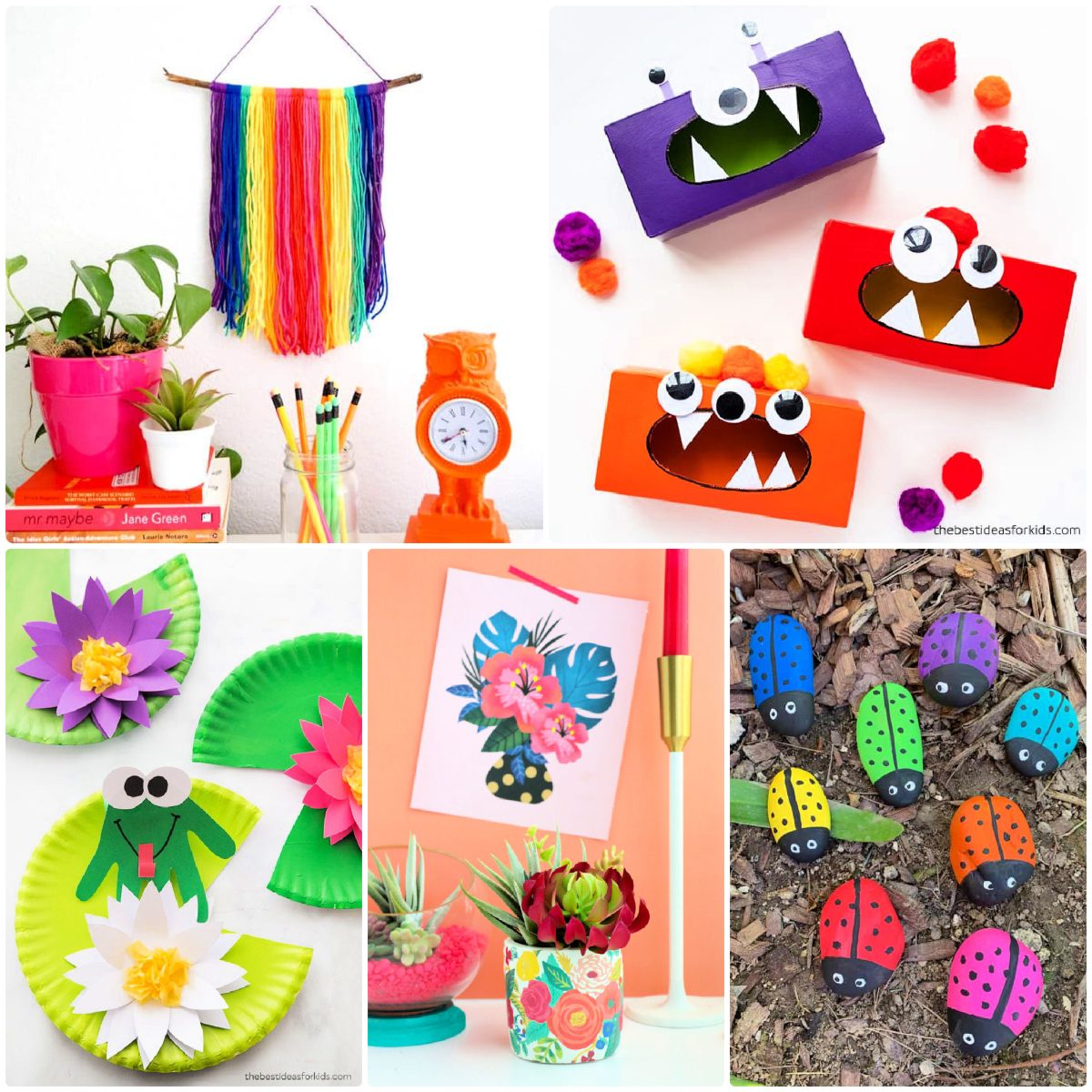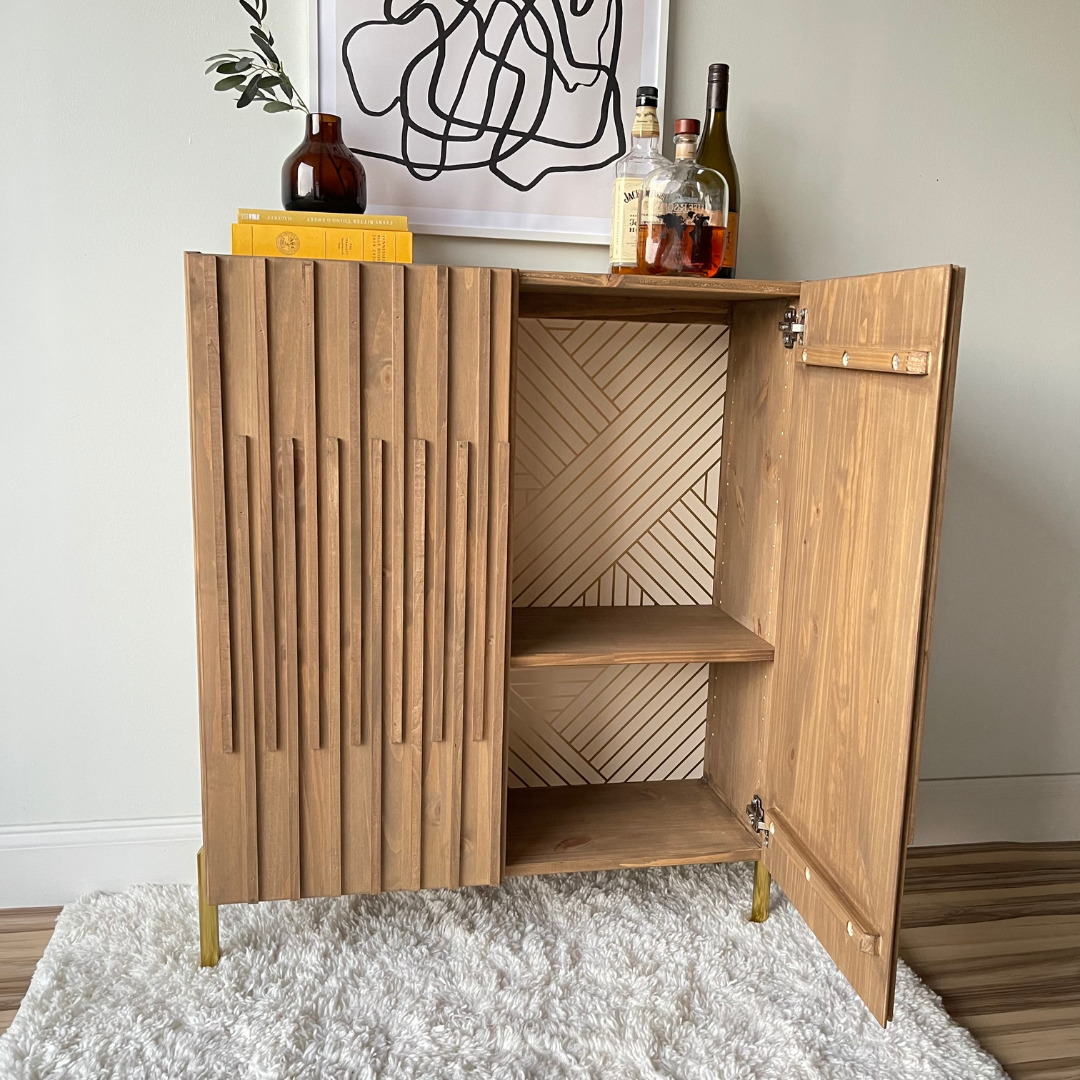DIY wind chimes offer a delightful blend of creativity and tranquility, inviting you to transform everyday materials into harmonious sound sculptures. From the gentle tinkling of glass beads to the resonant chime of metal tubes, the possibilities are as boundless as your imagination.
Wind chimes have long been a cherished part of cultures worldwide, symbolizing good luck, peace, and the harmonious connection between nature and humankind. Their origins can be traced back centuries, with diverse forms and materials evolving across different regions.
Introduction to DIY Wind Chimes
Wind chimes, with their soothing melodies and captivating movements, have graced homes and gardens for centuries, offering a timeless blend of aesthetics and auditory delight. Their origins can be traced back to ancient civilizations, where they held both practical and symbolic significance. These handcrafted instruments, often made from simple materials, have evolved over time, incorporating diverse cultural influences and artistic expressions.
The enchanting sounds produced by wind chimes are a result of a simple yet elegant principle of physics. When the wind blows through the chimes, it creates vibrations in the hanging tubes or plates. These vibrations travel through the material, causing the air around them to vibrate as well. This process, known as sound wave propagation, results in the mesmerizing melodies we associate with wind chimes.
Types of DIY Wind Chimes
Wind chimes offer a wide array of possibilities for creative expression, allowing individuals to personalize their sound and aesthetic preferences. Here’s a glimpse into some common types of DIY wind chimes:
- Shell Wind Chimes: These chimes feature seashells as the sound-producing elements, offering a unique and natural sound. The varying shapes and sizes of the shells contribute to a rich and varied melody.
- Metal Wind Chimes: Metal wind chimes, crafted from materials like aluminum, copper, or steel, produce a bright and resonant sound. They can be made in various shapes and sizes, allowing for a wide range of sonic possibilities.
- Bamboo Wind Chimes: Bamboo, a readily available and sustainable material, is often used to create wind chimes that produce a gentle and calming sound. The hollow nature of bamboo amplifies the vibrations, creating a soothing and meditative atmosphere.
- Glass Wind Chimes: Glass wind chimes offer a delicate and ethereal sound, with each piece resonating at a unique frequency. The transparent nature of glass allows for intricate designs and colorful accents, adding a touch of elegance to any space.
Materials and Tools

Creating wind chimes is a fun and creative project that allows you to express your personal style. You can use a variety of materials to craft your own unique chimes. This section explores the common materials and tools used for DIY wind chimes.
Materials
The beauty of wind chimes lies in their versatility. You can use a wide range of materials, from metals and wood to glass and natural elements.
- Metal: Aluminum, copper, and steel are popular choices for wind chimes. They offer a variety of sounds and finishes. Aluminum is lightweight and affordable, while copper and steel provide a more robust and resonant sound.
- Wood: Bamboo and driftwood are common choices for wind chime construction. Bamboo is lightweight and readily available, while driftwood adds a natural and rustic charm.
- Glass: Glass bottles and beads can add a unique visual and auditory element to your wind chimes. They can create a tinkling or clinking sound when struck by the wind.
- Natural Materials: Shells, stones, and other natural elements can be incorporated into wind chimes to create a unique and organic look. Shells offer a gentle and calming sound, while stones can create a more earthy and grounding sound.
Tools
The tools you need for crafting wind chimes depend on the materials you choose and the design you envision.
- Wire Cutters: These are essential for cutting metal or wire for hanging your chimes.
- Pliers: Pliers are useful for bending wire and securing materials.
- Drill: A drill is necessary for creating holes in wood or metal for hanging and attaching components.
- Scissors: Scissors are useful for cutting string, yarn, or fabric for hanging and embellishing your chimes.
- Glue: Glue is essential for securing materials together, such as attaching beads to the chime’s frame.
Design Ideas
The design of your wind chime is where you can truly let your creativity shine. Think about the overall shape, size, and how you want it to hang. These elements will play a significant role in how your wind chime looks and sounds.
Wind Chime Shapes
The shape of your wind chime can influence its sound and visual appeal. Consider these common shapes and their unique features:
- Circular: Circular wind chimes offer a balanced and harmonious sound. The circular shape allows sound waves to travel evenly, creating a soothing and consistent tone.
- Triangular: Triangular wind chimes tend to have a more dynamic and varied sound, as the shape allows for sound waves to bounce off different angles.
- Linear: Linear wind chimes, often resembling a mobile, provide a more delicate and airy sound. The hanging elements move freely, creating a gentle and whimsical effect.
Size and Scale
The size and scale of your wind chime will affect its sound and visibility. Consider these factors:
- Small wind chimes: Small wind chimes are ideal for indoor use or small outdoor spaces. They produce a delicate and subtle sound, perfect for creating a calming ambiance.
- Large wind chimes: Large wind chimes are better suited for outdoor spaces, where their powerful and resonant sound can be appreciated. They can also serve as a focal point in a garden or patio.
Hanging Methods
How you choose to hang your wind chime can impact its movement and sound. Explore these options:
- Single Point: This is the most common hanging method, where the wind chime is suspended from a single point. This allows for a more balanced and predictable movement.
- Multiple Points: This method involves hanging the wind chime from multiple points, creating a more dynamic and unpredictable movement. This can result in a more varied and interesting sound.
Wind Chime Styles, Diy wind chimes
Here’s a table showcasing various wind chime styles with their unique features:
| Style | Description | Materials | Image (description) |
|---|---|---|---|
| Traditional | Classic wind chimes with a simple design, often featuring bamboo tubes and metal clappers. | Bamboo, metal | A simple wind chime with bamboo tubes hanging from a circular metal frame. The clapper is a small metal disc. |
| Nature-Inspired | Wind chimes incorporating natural elements such as leaves, shells, or stones. | Wood, shells, stones | A wind chime with wooden tubes decorated with carved leaves and a shell clapper. |
| Geometric | Wind chimes with geometric patterns or shapes, often made from metal or glass. | Metal, glass | A wind chime with a triangular frame made from metal rods and glass beads hanging from each corner. |
| Musical | Wind chimes designed to create specific musical notes, often featuring metal tubes tuned to a specific scale. | Metal | A wind chime with metal tubes of varying lengths, each tuned to a different note. The clapper is a small metal ball. |
Examples of Wind Chime Themes
Wind chimes can be customized to reflect various themes, adding a personal touch to your design:
- Nature-Inspired: These wind chimes often feature natural elements like leaves, flowers, birds, or animal shapes. They can be made from wood, shells, or stones, and may incorporate natural sounds like the chirping of birds or the rustling of leaves.
- Geometric Patterns: Wind chimes with geometric patterns can be made from metal, glass, or wood. The patterns can be simple or complex, and they can be used to create a modern or minimalist look.
- Musical Notes: These wind chimes are designed to create specific musical notes, often featuring metal tubes tuned to a specific scale. They can be used to create a calming or uplifting atmosphere.
Construction Techniques
Now that you have gathered your materials and designed your wind chime, it’s time to bring your creation to life. This section provides a step-by-step guide to constructing a basic wind chime, along with techniques for attaching hanging elements and creating unique sounds.
Creating a Basic Wind Chime
Constructing a basic wind chime involves a few simple steps.
- Prepare the Chime Base: Select a sturdy base material, such as a piece of wood, metal, or a large seashell. Drill a hole through the center of the base for suspending the chime.
- Attach the Hanging Elements: Use a strong thread or wire to suspend each hanging element from the chime base. The length of the thread or wire determines the distance between the hanging element and the base, which affects the sound produced.
- Secure the Hanging Elements: Tie knots or use beads to secure the hanging elements to the thread or wire. Ensure that the knots are tight and secure to prevent the elements from falling off.
- Attach the Suspension Cord: Tie a sturdy cord or string to the hole in the chime base. This cord will be used to hang the finished wind chime.
- Adjust the Lengths: Experiment with the lengths of the hanging elements to create a harmonious sound. You can adjust the lengths by adding or removing beads or by tying knots at different points along the thread or wire.
Attaching Hanging Elements
Several methods can be used to attach hanging elements to the chime base.
- Knotting: A simple and effective method is to tie a knot around the hanging element and then tie the knot to the chime base. This method works well with materials like beads, shells, or small pieces of wood.
- Wire Wrapping: For heavier hanging elements, wire wrapping provides a more secure attachment. Use a thin wire to wrap around the hanging element and then wrap the wire around the chime base.
- Glue: A strong adhesive can be used to attach hanging elements to the chime base. This method is best suited for materials like wood, metal, or plastic.
- Drilling and Fastening: For sturdier attachments, drill a small hole through the hanging element and the chime base, then use a screw or bolt to secure the element in place. This method is ideal for heavier elements or when you want to ensure a long-lasting attachment.
Creating Unique Sounds
To create a wind chime with unique sounds, you can experiment with different materials, lengths, and decorative elements.
Using Different Materials
The density and thickness of the hanging elements influence the sound produced by the wind chime.
Using materials with varying densities, such as glass, metal, wood, and bamboo, will create a wide range of sounds.
For instance, a glass bead will produce a clear, ringing sound, while a piece of wood will produce a more muted, resonant sound.
Varying Lengths
The length of the hanging elements also affects the sound.
Shorter elements produce higher-pitched sounds, while longer elements produce lower-pitched sounds.
By varying the lengths of the hanging elements, you can create a harmonious melody or a more complex sound pattern.
Adding Decorative Elements
Decorative elements can enhance the sound of a wind chime by adding resonance or creating interesting sound effects.
Adding small bells, chimes, or other decorative elements to the hanging elements can create a more complex and interesting sound.
For example, a small bell attached to a bead will create a tinkling sound, while a chime attached to a piece of wood will create a more resonant sound.
Sound and Aesthetics

The sound and visual appeal of your wind chime are crucial aspects that will determine its overall charm and enjoyment. You can create a wind chime that not only produces beautiful melodies but also enhances the ambiance of your surroundings.
Factors Influencing Sound
The sound produced by a wind chime is influenced by several factors. Understanding these factors allows you to create a wind chime that resonates with your desired sound profile.
- Material: Different materials produce distinct sounds. For instance, metal wind chimes create a clear, resonant tone, while wood produces a warmer, more mellow sound. Bamboo offers a light and airy sound, while glass produces a delicate, tinkling sound. The choice of material significantly influences the overall character of the wind chime’s sound.
- Shape: The shape of the chimes plays a crucial role in determining the pitch and tone. Round chimes typically produce a more mellow sound, while rectangular chimes tend to have a more distinct pitch. Experimenting with different shapes allows you to create unique sound profiles.
- Size: The size of the chimes also influences the pitch and volume of the sound. Larger chimes produce lower, deeper sounds, while smaller chimes produce higher, more delicate sounds.
- Hanging Method: The way you hang your wind chime can affect the sound it produces. Hanging it from a fixed point allows for a more consistent sound, while hanging it from a flexible point, such as a branch, can create a more dynamic and varied sound.
Achieving Desired Sound Profile
To achieve a specific sound profile, you can combine different materials, shapes, and sizes.
- For a mellow, soothing sound: Consider using wood or bamboo chimes with rounded shapes and varying sizes.
- For a bright, lively sound: Use metal chimes with a mix of rectangular and round shapes.
- For a delicate, tinkling sound: Opt for glass or ceramic chimes with small, intricate designs.
Enhancing Visual Appeal
The visual appeal of your wind chime is equally important as its sound.
- Color: Use vibrant colors to create a visually stimulating wind chime. You can use paint, stain, or even natural variations in the materials to achieve desired colors.
- Design: Incorporate interesting designs and patterns into your wind chime. This could involve carving, etching, or using decorative elements like beads or shells.
- Hanging Point: Choose a visually appealing hanging point for your wind chime. This could be a tree branch, a porch railing, or a decorative stand.
Creative Variations
While the traditional wind chime design with metal tubes is widely popular, the beauty of DIY lies in the endless possibilities for innovation. You can create unique and personalized wind chimes by experimenting with unconventional materials, techniques, and design elements.
DIY wind chimes offer a delightful way to add a touch of whimsy and tranquility to your outdoor space. If you’re looking for a more practical project, consider tackling some DIY shelving for your home. Once your shelving is complete, you can even display your handcrafted wind chimes as a decorative touch!
Unconventional Materials and Techniques
Exploring a range of materials beyond the usual metal tubes can lead to captivating wind chimes. Here are some unconventional materials and techniques:
- Recycled Materials: Glass bottles, ceramic shards, seashells, and even old silverware can be repurposed to create beautiful wind chimes. These materials offer a diverse range of textures, colors, and sounds, contributing to the overall aesthetic appeal of the wind chime.
- Natural Elements: Incorporating natural elements like stones, twigs, dried flowers, and pine cones adds a rustic charm and connects the wind chime with the natural world. You can use these elements as accents or as the primary sound-producing components.
- Textiles and Fabrics: Woven fabrics, ribbons, and macrame can be used to create intricate wind chimes. These materials can be combined with other elements to add texture, color, and visual interest.
- Upcycled Electronics: Old circuit boards, gears, and other electronic components can be incorporated into wind chimes to create a unique and industrial aesthetic. The metallic elements can produce interesting sounds as they collide.
- Mixed Media: Combining different materials like wood, metal, glass, and fabric allows you to create truly unique and personalized wind chimes. The combination of textures and sounds can create a fascinating auditory experience.
Recycled Material Wind Chime
A wind chime made from recycled materials is a great way to give new life to old objects and create a sustainable and eco-friendly craft project. Here’s a simple example:
- Materials:
- Glass bottles of different sizes
- Twine or string
- Wooden dowel rod
- Scissors
- Hot glue gun
- Instructions:
- Clean and dry the glass bottles thoroughly.
- Cut the bottles to different lengths using a glass cutter or a diamond-tipped scoring tool.
- Tie a piece of twine or string to the top of each bottle.
- Attach the bottles to the wooden dowel rod using hot glue, ensuring they are spaced evenly.
- Hang the dowel rod from a sturdy branch or a hook using a longer piece of twine or string.
Wind Chime with a Specific Theme or Purpose
Wind chimes can be designed with a specific theme or purpose in mind, adding an extra layer of meaning and personalization. Here are some ideas:
- Nature-Inspired: Incorporate natural elements like leaves, branches, and stones to create a wind chime that reflects the beauty of the outdoors.
- Travel-Themed: Use souvenirs from your travels, such as seashells, pebbles, or miniature flags, to create a wind chime that evokes memories of your adventures.
- Seasonal: Design wind chimes that reflect the different seasons, using colors, materials, and themes that are associated with each season. For example, a fall-themed wind chime could feature dried leaves, acorns, and gourds.
- Memorial Wind Chime: Create a wind chime in memory of a loved one, using objects that represent their personality or hobbies. This can be a meaningful and touching way to honor their memory.
- Sound Therapy Wind Chime: Select materials and design elements that produce specific sounds known to have therapeutic benefits, such as calming or energizing effects. This can be a helpful addition to a meditation or relaxation space.
Integration with Other DIY Projects
Wind chimes can be incorporated into other DIY projects, adding a unique and functional element. Here are some examples:
- Garden Decor: Wind chimes can be hung from trellises, arbors, or other garden structures to create a visually appealing and auditory experience.
- Outdoor Lighting: Wind chimes can be integrated with solar-powered LED lights to create a mesmerizing display at night.
- Bird Feeders: Wind chimes can be incorporated into bird feeder designs, adding a whimsical touch and attracting birds to your garden.
- Windsocks: Wind chimes can be attached to windsocks to enhance their visual appeal and create a more dynamic display.
Placement and Care
The location you choose to hang your wind chime significantly impacts its longevity and the sounds it produces. Additionally, understanding how to protect your wind chime from the elements and maintain its beauty is crucial.
Ideal Locations for Wind Chimes
The ideal location for your wind chime depends on your desired sound and visual effect. Here are some factors to consider:
- Wind Exposure: A location with consistent, gentle breezes will create the most pleasant and consistent sound. Avoid areas with strong winds, as they can damage the chime or make it too noisy.
- Visual Appeal: Consider the overall aesthetic of your home and garden. A wind chime can add a touch of whimsy and beauty to a porch, patio, or tree branch.
- Sound Reflection: Surrounding structures, such as walls or fences, can amplify the chime’s sound. If you want a more pronounced sound, consider hanging the chime near a reflective surface.
Protecting Wind Chimes from the Elements
Outdoor wind chimes are exposed to the elements, which can affect their appearance and longevity.
- Weatherproofing: Choose wind chimes made of weather-resistant materials, such as metal, wood, or durable plastics. Some wind chimes may have a protective coating to prevent rust or fading.
- Shelter: If possible, hang your wind chime in a partially sheltered location, such as under an awning or overhang. This will help protect it from direct rain and sun.
- Winter Protection: In areas with harsh winters, consider bringing your wind chime indoors to prevent damage from freezing temperatures and snow. If you choose to leave it outdoors, ensure the hanger is secure and won’t be affected by ice or snow buildup.
Cleaning and Maintaining Wind Chimes
Regular cleaning can help your wind chime stay beautiful and sound its best.
- Dust Removal: Use a soft cloth or brush to gently dust off the chime. Avoid using harsh chemicals or abrasive cleaners, as these can damage the finish.
- Rust Removal: For metal wind chimes, use a mild soap and water solution to remove rust. You can also use a commercial rust remover if needed.
- Hanger Inspection: Regularly inspect the hanger for signs of wear or damage. Replace the hanger if necessary to ensure the chime remains secure.
Safety Considerations: Diy Wind Chimes
Creating wind chimes is a fun and rewarding DIY project, but it’s crucial to prioritize safety throughout the process. By following a few simple precautions, you can ensure a safe and enjoyable experience.
Tool Safety
- Always wear appropriate safety gear, such as safety glasses, gloves, and a dust mask, when working with tools. This will protect you from flying debris, sharp edges, and dust inhalation.
- Use tools according to their intended purpose and follow the manufacturer’s instructions for safe operation. Avoid using tools that are damaged or worn out, as they may pose a safety risk.
- Store tools properly when not in use to prevent accidents and ensure their longevity.
Material Safety
- Choose materials that are safe for your intended use and environment. For example, avoid using materials that are toxic or flammable, especially if you plan to hang your wind chimes outdoors.
- Handle materials carefully, especially sharp or heavy items, to avoid injuries. Wear gloves when handling materials that may irritate your skin.
- Dispose of materials responsibly. Check with your local waste management agency for proper disposal methods for specific materials, such as paint, metal, or glass.
Wind Chime Safety
- Ensure the wind chime is securely attached to its hanging point to prevent it from falling and causing damage or injury.
- Avoid using materials that can easily break or shatter, as this could pose a safety hazard, especially for children or pets.
- Inspect the wind chime regularly for signs of wear and tear and repair or replace any damaged components promptly.
Inspiration and Resources
The world of DIY wind chimes is brimming with creative possibilities. To fuel your imagination and guide your crafting journey, we’ve compiled a collection of valuable resources.
This section explores websites, blogs, books, and articles dedicated to the art of wind chime making. It also encourages you to share your own unique wind chime creations, inspiring others and fostering a community of DIY enthusiasts.
Websites and Blogs
Websites and blogs dedicated to DIY wind chimes offer a wealth of inspiration, tutorials, and project ideas. These online platforms provide a vibrant community where you can connect with other wind chime enthusiasts, share your creations, and learn from experienced crafters.
- Windchime.com: This website features a comprehensive guide to wind chimes, including information on history, types, materials, and DIY projects. It offers a vast collection of resources, from basic tutorials to advanced techniques, making it a valuable hub for wind chime enthusiasts of all levels.
- Windchime World: This website provides a diverse range of wind chime designs, materials, and construction techniques. It features detailed tutorials, inspiring projects, and a forum where you can connect with other wind chime lovers.
- The Spruce Crafts: This website offers a wide variety of DIY crafts projects, including wind chimes. It features step-by-step instructions, clear images, and tips for creating unique and beautiful wind chimes.
Books and Articles
Books and articles offer a more in-depth exploration of wind chime crafting, providing detailed information on materials, techniques, and design principles. They can serve as valuable resources for those seeking to delve deeper into the art of wind chime making.
- “The Complete Book of Wind Chimes” by Mary Jo Peckham: This book provides a comprehensive guide to wind chime making, covering a wide range of topics, from materials and techniques to design and sound. It offers detailed instructions, clear illustrations, and inspiring project ideas.
- “Wind Chimes: A Guide to Making and Enjoying Them” by Sue V. Williams: This book explores the history, materials, and construction techniques of wind chimes. It provides step-by-step instructions for creating a variety of wind chime designs, from simple to complex.
- “Wind Chime Making: A Beginner’s Guide” by John Smith: This book is specifically designed for beginners, offering easy-to-follow instructions and basic techniques for creating wind chimes. It provides a solid foundation for those new to wind chime crafting.
Sharing Your Creations
Sharing your wind chime creations with others is a rewarding experience. It allows you to inspire others, receive feedback, and contribute to the growing community of DIY wind chime enthusiasts.
- Online Platforms: Share your wind chime creations on social media platforms like Instagram, Pinterest, and Facebook. Use relevant hashtags to connect with other wind chime enthusiasts and gain visibility for your projects.
- Crafting Communities: Join online crafting communities and forums dedicated to DIY projects. Share your wind chime designs, ask for advice, and connect with other crafters.
- Local Events: Participate in local craft fairs and markets to showcase your wind chimes and connect with potential buyers.
Last Word
Crafting DIY wind chimes is an enriching experience that combines artistry, resourcefulness, and a touch of magic. With each chime you create, you’re not just adding a whimsical element to your surroundings, but also crafting a personalized melody that resonates with your unique spirit. So, gather your materials, let your creativity flow, and enjoy the soothing symphony of your very own wind chime creations.




